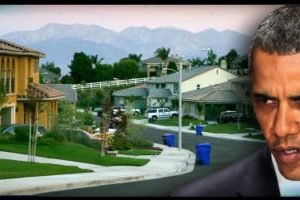I routinely speak to associations and business groups about the state of the economy, capital markets, and real estate. In fact, I may be spending more time talking about deals, than I am closing deals. Lately, during my Q&A sessions, the audience is a reminder of my younger sister when my family used to drive to Myrtle Beach, every ten minutes she wanted to know “are we there yet”, investors and real estate professionals are clamoring to know – have we reached bottom yet?
The American real estate market has been on the decline for over two years, and some are predicting that commercial property values have bottomed. My grandfather used to remind me of an old Chinese proverb that says “a wise man is wise enough to know that only a fool makes predictions”, so I will refrain from being a “fool”.
Commercial real-estate values bottomed last May, according to a new commercial-property-price index designed by Green Street Advisors, the index is based on estimates of current REIT asset values and not actual transaction data. The index shows that values are still down 30% from peak pricing in August 2007, but are up 9% from May 2009.
Transaction volume is almost non-existent and sales have declined 73% since 2008, so investors argue that a survey-based price gauge may give a more real-time picture of the market. I would argue that actual sales data is the only way for investors to feel confident with the price paid to acquire commercial property.
I am not familiar with this index nor have I used anything similar to advise my clients. However, stabilization of commercial property prices would be a huge relief, and could give investors a sense of certainty that may attract them back into the sector. REITs typically own buildings that are fully leased, may have credit tenants, and they are located in established markets. I suspect that properties with a vacancy located in emerging markets may prove to be resistant to stabilization.
The percentage of loans 30 days or more delinquent rose to 6.07% in December from 5.65% a month earlier, a sign of potential troubles ahead as nearly $40 billion of commercial-mortgage-backed bonds come due this year. Most analysts predict that delinquency rates could rise to between 9% and 14% by year end.
Stable prices may not do much to help the 6% of commercial-mortgage borrowers currently behind on their payments. These borrowers are over-leveraged on their assets and most owe the bank more than the value of their property. The weak economy is making it difficult for businesses to keep up with their rent payments or to meet scheduled rent increases, their landlords will find it just as hard to keep up with their mortgages. Small and regional banks are deep into commercial mortgages, so they will be focused on minimizing the damage to their balance sheets from troubled loans in 2010. If any of these distressed assets find their way to the market, then a rebound in prices will face a significant headwind.
Commercial property owners need to be prepared for yet another challenging year in operations. Vacancy rates continue to trend upward and rents have not found a floor. Cash flow will remain under pressure while the economy recovers, hiring is restarted, and the consumer regains confidence. Commercial property values may be stabilizing for assets in top-tier markets, but the pressure and challenges have not totally subsided. Sorry kids, we are not there yet!


